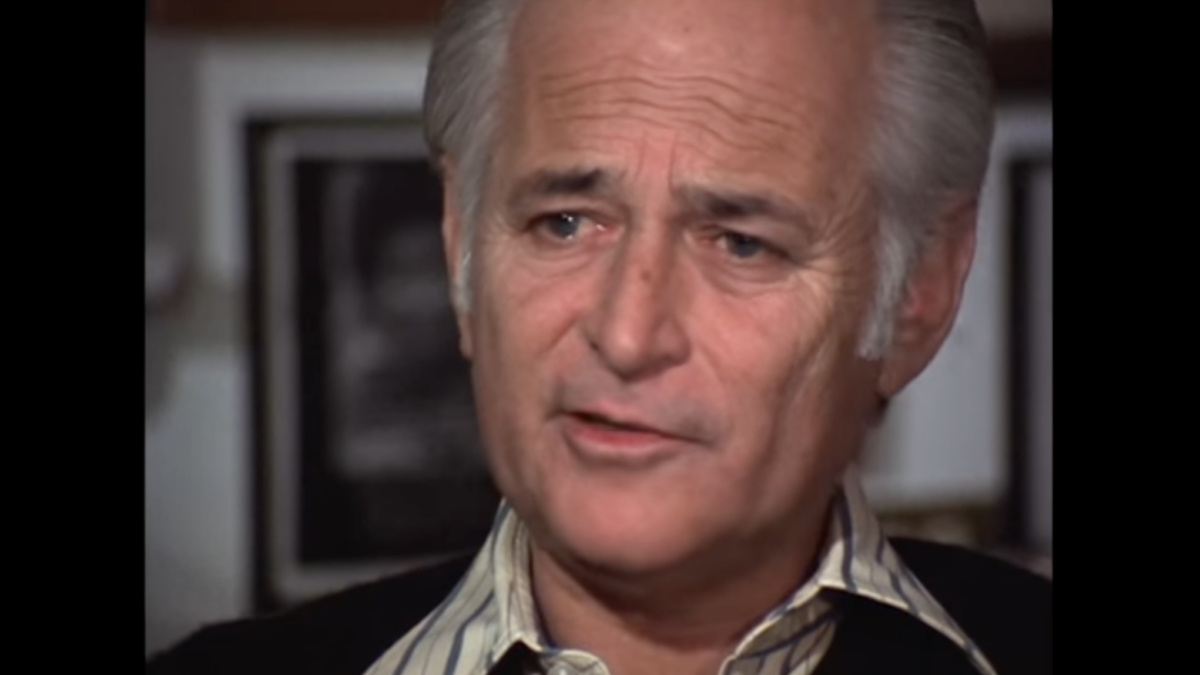Norman Milton Lear rose to fame in the 1970s due to his freakish predilection for writing and producing TV shows that Americans couldn’t get enough of. “The Jeffersons,” “Maude,” “Good Times,” and “Sanford and Son” all came to be because of Lear. His first foray into the medium, “All in the Family,” appeared in 1971. It was the top-rated show from that year until 1976 and remained on the air until 1979.
Lear, who went from his success with “All in the Family” to pioneering sitcoms featuring black families, died on Dec. 5. Given the silliness of the current age, obituaries celebrating his legacy are obliged to find grievances with certain aspects of his work. One noted that “he leaves behind a legacy that is problematic, groundbreaking, and memorable.” Another mentioned his “complicated” legacy. Yet another reminded readers that he “erased” his “Good Times” co-creator.
What meatheads. Of course, he was problematic and has a complicated legacy! While Lear was always a liberal, and always one in good standing, a folly of modern liberals is to constantly evaluate the past through the modern lens. And through such a lens, the past is always found wanting, at least to those with too much free time and immovable chips on their shoulders.
Not that any of this would likely be shocking to Lear himself. When “All in the Family” took off, he was shocked at the audience’s reception to the patriarch of the family, Archie Bunker. Archie was written as the opposite of everything Lear stood for. He was a curmudgeon, a racist, a misogynist, and, worst of all, a conservative. In Lear’s worldview, how could anyone like such a despicable character?
Alas, something else happened when people watched the show. The audience didn’t hate him. They loved him. The supposed voice of reason of the show, Archie’s son-in-law Michael Stivic, wasn’t seen as the enlightened one, but as a goof. “Meathead,” as Archie called Michael, was the comedic foil.
Much of the same could be said of “Sanford and Son,” even if Fred G. Sanford, portrayed by comedian Redd Foxx, wasn’t written in the same spirit as Archie Bunker. When it premiered in 1972, there weren’t any sitcoms about black people. Lear wasn’t trying to incite people to racism in bringing the show to the public. He was trying to foster togetherness by showing us how people of different colors aren’t so different.
In fact, “Sanford and Son” was my favorite show as a young boy. Growing up in a town and neighborhood with lots of black families, it never occurred to me that prior to its release, black families weren’t depicted in sitcoms. It wasn’t that I was born to celebrate diversity and inclusion, particularly as I was born a problematic white man, I simply loved how hilarious and pugnacious widower Fred Sanford was, particularly when it came to his interactions with his son Lamont and his sister-in-law Esther. I especially enjoyed Fred’s signature bit, generally deployed when aggravated by one of those two. In those moments, Fred would clutch his chest and proclaim, “This is the big one, Elizabeth! I’m coming to join you, honey!”
While it has been lost to the ravages of time, there once existed a cassette tape of me, around 3 or 4 years old, doing my best rendition of that bit. I may not have had cardiac issues, nor a deceased wife named Elizabeth, but I didn’t let that stop me from delivering a performance that was just as believable as those Fred gave, particularly in that neither of us actually suffered a heart attack.
“Sanford and Son” was the second most watched show in America, just behind “All in the Family.” Other sitcoms about black families that Lear brought to the screen also fared well, even if they too must now be evaluated through the most ridiculous modern lens.
George Jefferson, of “The Jeffersons,” for example, may have moved on up to the East Side, but he remained “rude, loud, obnoxious, and racist.” That Archie Bunker was also rude, loud, obnoxious, and racist apparently isn’t a comment on his race, nor do these scolds consider the possibility that Lear simply had an affection for shows with rude, loud, and obnoxious characters.
As for “Good Times,” it was problematic because the Evans family made living in the projects seem too nice. “Diff’rent Strokes,” which arose in the 1980s, employed the white savior trope. These are all egregious sins for modern liberals, ones for which Lear must be held accountable, even while being celebrated.
Perhaps, though, there’s a better lesson, and that lesson is that without people like Lear, society may never have made it to the point that it’s at today, or rather was at for a few magical years in the late ’90s and early ’00s. Those of us who came of age then, particularly we Gen Xers, remember a time when everyone was mostly just cool with one another and intersectionality had not yet entered the chat. We got to experience the world that Lear was pushing toward, even if his compatriots didn’t know when to stop pushing.
As such, things are a bit different today, again thanks to the rise of patent nonsense that tells us race is the most important thing about a person. The percentage of people who say relations between white and black people are good is on the decline, which surely can’t be a result of that obsessive focus on skin color. And a man who pioneered putting regular black people on television must be remembered as complicated and problematic because he didn’t take a time machine from the 1970s to the 2020s before thinking about how to present those black people.
Norman Lear’s television work was focused on making America a better place, one in which the promise of “All men are created equal” might become a little truer, even if his work made him a little more equal than others. Nonetheless, it was about elevating people, not denigrating them. So, to those who insist on adding such silly qualifiers as “complicated” and “problematic” to discussions of Lear’s work, the best response is to say to them what Fred G. Sanford said to Esther and a group of her church lady friends when they were annoying him: “Shut up. You sound like a bunch of clucking ducks.”









